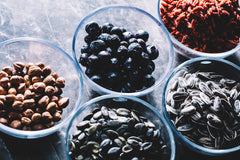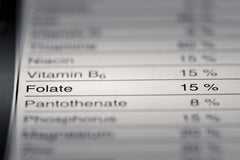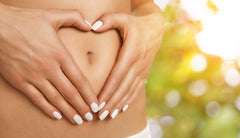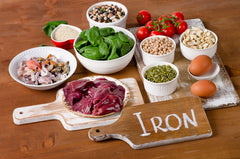Written by Carmela Pengelly. Carmela is a dietary therapist and nutritional therapist, trained in the UK.
She now lives in Perth, Western Australia, where she practices as a nutritionist, specializing in SIBO (small intestinal bacterial overgrowth), methylation issues, and vegan/vegetarian diets. She also offers consultations outside of Australia, via Skype.
If you’ve shed plenty of blood, sweat and tears during your workouts, you owe it to yourself to follow-up with a good recovery plan.
Proper recovery helps you get the best out of your workout. It will help you build muscle, strength and stamina more quickly, have more energy between and during workouts, reduce your chances of getting sick during training, reduce muscle soreness, and recover more quickly, ready for your next workout.
If you want to ensure your recovery time is as short as possible, read all 13 of our tough workout recovery tips below.
Tear and Repair
So, what happens to our bodies during intense exercise?
It sounds brutal but during tough workouts our muscles are damaged and small micro-tears occur in muscle fibres.
Recovery is partly about repairing this damage, but our bodies also go through an adaptation process where we start to adjust to the demands of the exercise.
After anaerobic exercise (fuel burning in the absence of oxygen), such as weight training, sprinting or high intensity interval training (HIIT), your muscles start to bulk out as individual muscle fibres are made bigger during repair.

Muscle fibres also contain mitochondria. Mitochondria are termed the power houses of our cells, as they produce ATP, which is our bodies’ energy currency.
We make more mitochondria so that we can make more ATP during workouts. Therefore, many people report feeling more energetic when they exercise regularly.
DOMS
Most people have experienced waking up with stiff, sore muscles after an intense workout. DOMS – delayed onset muscle soreness - can occur anytime between about 12 hours and 72 hours afterwards.
Its main cause is the local inflammation that accompanies exercise-induced muscle damage.
Rehydrating
Dehydration reduces blood flow to muscles and the brain, and the repair process will slow down. You’ll feel more tired and less able to concentrate. You’ll also have a harder time eliminating waste products generated during exercise e.g. through the kidneys.
Fluid lost during exercise is extremely variable from person to person - some people simply sweat more than others.
You can estimate your fluid loss using the guide below.
It’s also a good idea to use this guide to ensure you’re drinking enough during exercise. The American College of Sports Medicine recommends that you avoid losing more than 2% of your body weight in sweat during a workout.
Make a Milkshake
Milk is an excellent post-workout drink. It has been found to improve hydration better than water or sports drinks, as well as speed recovery and replenish glycogen stores.
Milk also contains sodium, one of the minerals we lose through sweat.
Refuelling
Refuelling after an intense workout will help to:
- Replenish Fuel Stores
We store glucose as glycogen in the muscles and liver, and our bodies draw on this as fuel when other sources of glucose are unavailable. Only small amounts of glycogen can be stored, so we do run out with prolonged workouts and endurance activities.
Consuming carbohydrates will restore glycogen levels.
- Build Power Houses
We’ve mentioned that the more muscle you build, the more mitochondria you will have. As mitochondria are the power houses of our cells, more of them mean you will have more energy generally but will also be able to perform harder, more intense workouts, which, in turn will increase muscle mass.
Protein is one of the best ways to support production of more mitochondria.
- Repair and Build Muscle
Protein provides the amino acids our body needs to repair muscle. It also stimulates the production of new muscle fibres and reduces muscle soreness.
When to Refuel
There is no hard and fast rule for exactly when you should refuel. The best method is to eat and rehydrate as soon as you can after a workout.
The following recommendations are valid for any type of exercise that is strenuous enough to cause muscle damage (natural muscle tears) and to deplete your glycogen stores.
How Much Protein?
The US and Canadian Dietetics Associations recommend a daily protein intake of between 1.2 and 1.7 g per kg of your body weight. For example, if you weigh 70 kg, you would need 84-119 g of protein per day.

A post-workout protein serving should be around 0.25 kg per g of weight e.g. around 18 g for a 70 kg person.
Do You Really Need a Protein Powder?
You don’t necessarily need to use protein powder post-workout. You can still get the amino acids you need from food sources.
Protein powders are convenient and quick to prepare, however, and it’s easier to measure how much protein you’re getting in a powder than in a food.
Casein
We continue to synthesise muscle tissue in response to protein 24 hours after a workout so if you’re keen to build muscle, it helps to have a casein protein drink just before going to bed.
Casein is a milk-derived protein and is much more slowly absorbed than whey proteins.
Wheying Up the Pros and Cons
Whey protein is considered superior to plant-based proteins for sports recovery. It is higher in BCAAs (branched-chain amino acids), particularly leucine. BCAAs include leucine, isoleucine and valine and are the most important amino acids for building muscle.
Having said that, there are more plant-based proteins on the market now that combine pea and rice proteins, and these tend to have much better amino acid profiles. BCAAs are still not quite as high as whey and casein proteins though.
A good quality undenatured whey protein also enhances the immune system, which will help to stop you getting sick if you’re on a training program.
Isolate or Concentrate?
Whey protein isolate has the advantage of being higher in protein than concentrate as it has had most of the carbs and fat removed. It is also absorbed more quickly than concentrate.
The disadvantage is that it has had to undergo heavier processing which reduces its immune-boosting properties.
If you want to use an isolate choose one that has been processed using cross-flow microfiltration techniques, as this helps to preserve the nutrients in whey.
Combining Proteins and Carbs
Having carbohydrates at the same time as protein will boost muscle repair and mitochondrial production more effectively than protein on its own.
Post-workout, you should aim to have a dose of carbs of about 1 g for every kg that you weigh. So, for instance, if you weigh 70 kg, you will need around 70 g of carbohydrates.
The optimum ratio of carbohydrate to protein is 4:1. For example, if you weigh 80 kg you should aim for a post-workout meal of 80 g carbs and 20 g of protein.
Chocolate milk is a good choice post-workout as it generally has approximately a 4:1 ratio carbs to protein. A 400 ml serving of supermarket chocolate milk will give you around 40 g carbs and 16 g protein.
You may want to supplement this with a carb/protein snack later e.g. a protein drink and a large banana (or a couple of dates), or, for convenience, a couple of protein snack bars.
Leave the Free Radicals Alone
Intense workouts increase production of free radicals and inflammatory substances in the body, and, as we have mentioned before, this is the reason why we experience DOMS one or two days after exercise.

Conventional wisdom would suggest that taking antioxidants, such as vitamins A, C, and E, will reduce damage to muscles and mitochondria by neutralising free radical damage. This would also reduce DOMS.
Exercise can be viewed as an anti-inflammatory, as the oxidative stress we experience during a workout causes our muscles to produce several very powerful antioxidant chemicals to counter free radical damage.
Whilst antioxidants have been shown to reduce muscle soreness and inflammation, evidence suggests that their use is counterproductive, as they suppress the production of our own antioxidants.
Antioxidant supplementation has also been shown to inhibit the production of new mitochondria and slow down the removal of lactic acid from muscles, so slowing recovery.
Certainly, antioxidants are generally beneficial and help to promote a healthy immune system. Until more conclusive evidence emerges, the best advice is to avoid antioxidant supplements and stick to foods to boost your antioxidant status instead, e.g. berries, cocoa, capsicums.
Antioxidants and natural anti-inflammatories (e.g. fish oils, turmeric and bromelain) still also play an important role in helping to speed recovery from sports injuries.
Rest
Rest after a workout is as important as the workout itself. We need to allow our bodies to repair muscle damage and build new muscle.
Make it a priority to get plenty of quality sleep every night.
What to do About DOMS
DOMS is a sign that you’ve had a good workout and your muscles are undergoing repair. So it doesn’t make sense to go out hard and fast while your body is still in this recovery stage.
The best strategy if you don’t want to skip your workouts is to dial down their intensity until DOMS starts to wear off. ‘Pushing through it’ can lead to greater risk of injuries and more inflammation than your body can effectively deal with.
Top 5 Supplements for the Best Recovery
- Glutamine
Glutamine is an amino acid and has several benefits:
- It stimulates the production of glycogen so that you can replenish stores more quickly.
- It helps repair the gut lining, which can become inflamed and damaged during tough workouts.
Take around 6 g of L-glutamine after exercise for best results.
- Probiotics
The second most common health problem that athletes suffer after injuries is chest infections. Studies demonstrate that probiotics boost immunity and reduce the likelihood of these types of infections.

A daily probiotic is also an excellent way of protecting your gut and keeping it healthy during your training program.
Look for a probiotic with multiple strains and containing at least 10 billion CFUs, such as Nu U Nutrition Bio-Cultures Complex.
- Creatine
Creatine is needed in the production of ATP and to help replenish glycogen in muscle. Creatine works best by starting with a high dose of 3-5 g four times a day for the first 4-5 days and then reducing to one maintenance dose of 3-5 g after a workout.
- Magnesium
Magnesium is one of the electrolytes you need to replace after exercise. It will help to prevent cramping and improve quality of sleep.
Consider taking between 300-600 mg, depending on how much sweating and fluid loss occurred during your workout. You can split the dose and have half after exercise and half before bedtime to promote sleep.
- BCAAs
If you’re keen to build as much muscle as possible, BCAAs are a useful addition to your post-workout regime. About 10 g after exercise is usually sufficient.
Getting the Most Out of Your Workouts
To ensure you get the most out of your exercise efforts, take the time to properly refuel, rehydrate and recover from your workouts. This extra time, combined with the right combination of supplements like magnesium and bio-culture probiotics can help ensure you not only feel better faster, but see the results you’re driving for.





